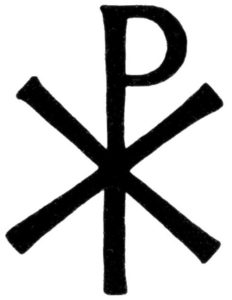Constantine’s Vision of the Cross ~ Early Accounts and Backstory
ΕΝ ΤΟΥΤΩ ΝΙΚΑ otherwise, IN HOC SIGNO VINCES

Constantine’s great victory at the Battle of the Milvian Bridge took place on October 28, AD 312. The day before — October 27 — is the date traditionally given for the miraculous vision and dream which Constantine experienced prior to the battle. This vision has been the subject of debate in both scholarly and popular imagination for hundreds of years. But what really happened on that day 1,705 years ago that changed forever the course of human history?
As a prelude to the famous accounts of this vision, it should be noted that Constantine also seems to have had pagan theophany in the early years of his reign. Writing sometime between AD 307 and AD 310, an anonymous Gallic panegyricist describes Constantine’s presence on the frontier as almost miraculous in restoring order after a barbarian incursion. He explains the reason why as follows:
“Fortune herself so ordered this matter that the happy outcome of your affairs prompted you to convey to the immortal gods what you had vowed at the very spot where you had turned aside toward the most beautiful temple in the whole world, or rather, to the deity made manifest, as you saw. For you saw, I believe, O Constantine, your Apollo, accompanied by Victory, offering you laurel wreaths, each one of which carries a portent of thirty years. For this is the number of human ages which are owed to you without fail—beyond the old age of Nestor.”
[In Praise of the Later Roman Emperors, page 248-50]
This reputed vision of Apollo took place at least two years prior to Constantine’s more famous vision of a cross in the sky. Interestingly, this vision fits in well with the Christian accounts of later events.
